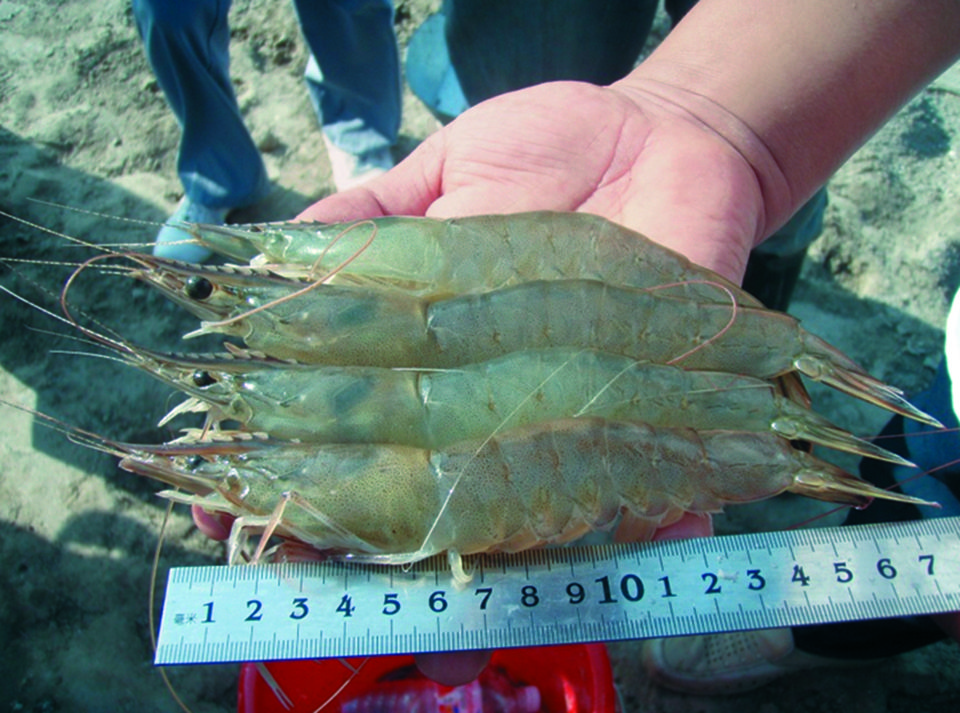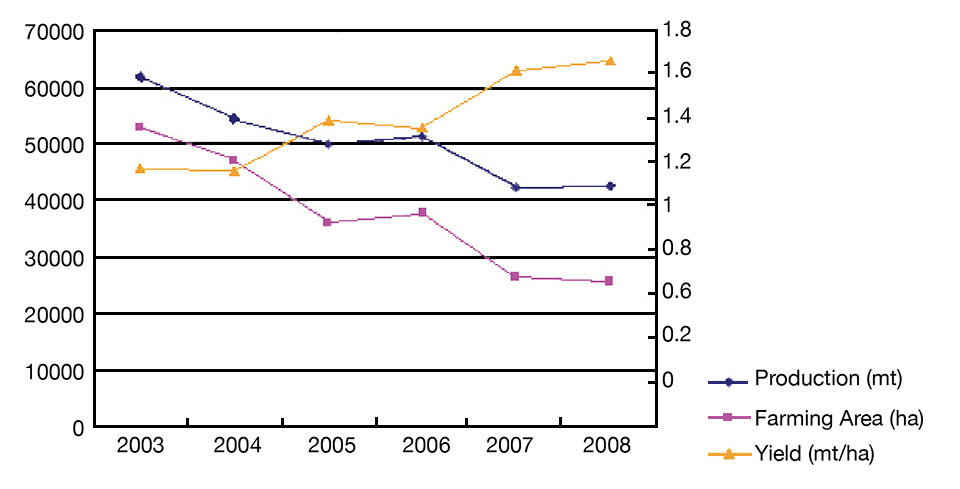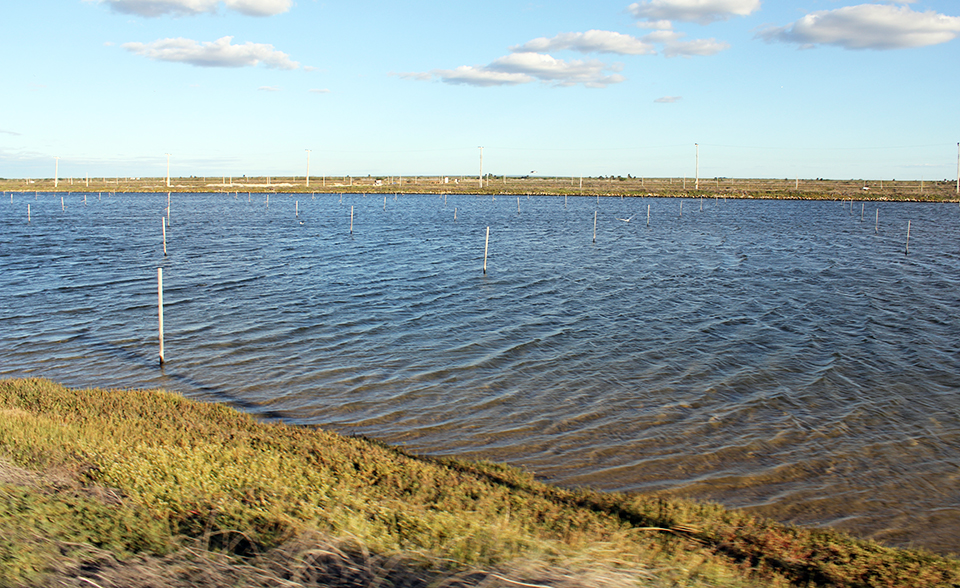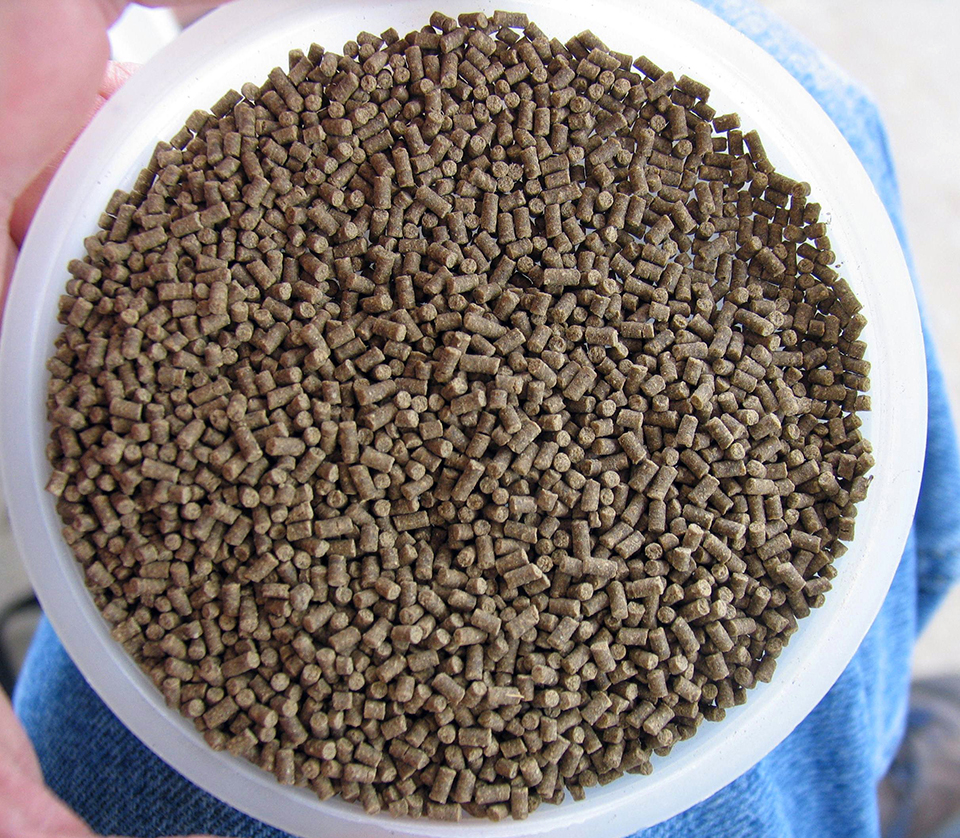Scientists with Yellow Sea Fisheries Research Institute introduce bioflocs

The fleshy shrimp, F. chinensis, used to be the most important farmed shrimp species in northern China. In the late 1980s and early 1990s, annual production of this species from farm ponds reached 200,000 metric tons, while the catastrophic breakout of white spot syndrome in 1993 resulted in a dramatic decline in farming yield. Annual output of was only around 50,000 metric tons in the last few years.
In China, products have had much higher market value than those of other shrimp species. Some consumers pay up to five times more for fleshy shrimp. That’s why China’s aquaculture scientists, with the support of the government’s fishery agencies, have worked closely with shrimp farmers to rebuild the farming industry of F. chinensis.
Recently, new trends in shrimp farming development in northern China revealed a positive future for farming. Production has stabilized, and although production area is down, yields have risen (Fig. 1).

New ideas
New ideas are being introduced. For example, the shrimp-farming industry does not make yield such a singularly defining goal, for high yields do not always mean high economic returns. Lower stocking density means smaller harvests, but the larger shrimp sizes achieved usually deliver a higher market value.
Shrimp farming is taking a more ecosystem-based approach. In the past, the industry focused primarily on direct costs such as larvae, feed and labor. Today, shrimp farmers increasingly realize that sustainable development can only be achieved when farming activities are harmonious with the environment. Protecting the environment means protecting the shrimp industry itself.
Genetics
Genetically improved shrimp should be farmed as much as possible. As with improved agriculture crops such as wheat, corn or rice, they offer faster growth, better disease resistance or other economic benefits.
At its beginning, shrimp farming in China depended upon wild-caught larvae and wild spawners for larval rearing in hatcheries. No systematic selective breeding was carried out. That means the genetic improvement of farmed shrimp stock has become an urgent task.
Since 1997, systematic selective breeding for faster growth and disease resistance in has resulted in new varieties. Huanghai No. 1 shrimp, characterized by faster growth performance, were cultured experimentally in Shandong, Liaoning, Hebei and Jiangsu Provinces.
Huanghai No. 2, a new variety with better disease resistance, began commercial farming in 2009. Both of the new shrimp lines achieved excellent results.
A special workshop was organized in January in Qingdao, China, to discuss the issues related to wider use of the new varieties in coming years. The participants anticipated that with their wider cultivation, the prospects for farming in northern China will be much better than before.
New systems
New farming modes are being developed. Different polyculture or ecological farming modes were investigated to reduce the problems caused by the prevalence of white spot syndrome. In recent years, scientists with Yellow Sea Fisheries Research Institute (YSFRI) introduced a promising farming concept incorporating bioflocs.
With their system, unused nutrients are removed with the production of microbial biomass that can be used by shrimp as an additional food source. The flocs also play an important role in controlling against diseases and adjusting dissolved oxygen, temperature and pH levels.
YSFRI has developed several kinds of intensive biofloc farming modes and extended them successfully to shrimp-farming areas across the provinces of northern China. It has been reported that yields of and rose up to 15 metric tons per hectare at intensive farming operations using bioflocs in Shandong Province.
(Editor’s Note: This article was originally published in the July/August 2010 print edition of the Global Aquaculture Advocate.)
Now that you've reached the end of the article ...
… please consider supporting GSA’s mission to advance responsible seafood practices through education, advocacy and third-party assurances. The Advocate aims to document the evolution of responsible seafood practices and share the expansive knowledge of our vast network of contributors.
By becoming a Global Seafood Alliance member, you’re ensuring that all of the pre-competitive work we do through member benefits, resources and events can continue. Individual membership costs just $50 a year.
Not a GSA member? Join us.
Authors
-
Dr. Qingyin Wang
Yellow Sea Fisheries Research Institute
Chinese Academy of Fishery Sciences
106 Nanjing Road
Qingdao 266071 China[110,99,46,100,115,46,100,113,46,99,105,108,98,117,112,64,103,110,97,119,121,113]
-
Dr. Weiji Wang
Yellow Sea Fisheries Research Institute
Chinese Academy of Fishery Sciences
106 Nanjing Road
Qingdao 266071 China
Related Posts

Responsibility
A look at various intensive shrimp farming systems in Asia
The impact of diseases led some Asian shrimp farming countries to develop biofloc and recirculation aquaculture system (RAS) production technologies. Treating incoming water for culture operations and wastewater treatment are biosecurity measures for disease prevention and control.

Health & Welfare
AHPN inferences based on behavior of vibrio bacteria
Vibrio parahaemolyticus, a strain of which is the cause of acute hepatopancreatic necrosis (AHPN), has both virulent and benign strains. This strain colonizes the stomachs of shrimp by the formation of a biofilm, which protects it from antibiotics and other potential treatments.

Health & Welfare
A case for better shrimp nutrition
Shrimp farm performance can often be below realistic production standards. Use proven nutrition, feeds and feeding techniques to improve profitability.

Health & Welfare
A comprehensive look at the Proficiency Test for farmed shrimp
The University of Arizona Aquaculture Pathology Laboratory has carried out the Proficiency Test (PT) since 2005, with 300-plus diagnostic laboratories participating while improving their capabilities in the diagnosis of several shrimp pathogens.



